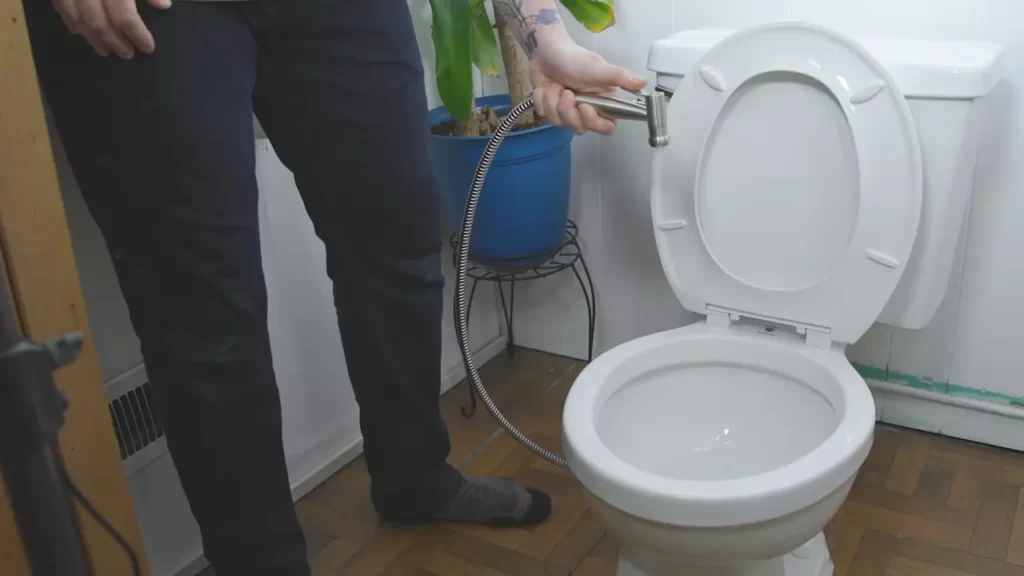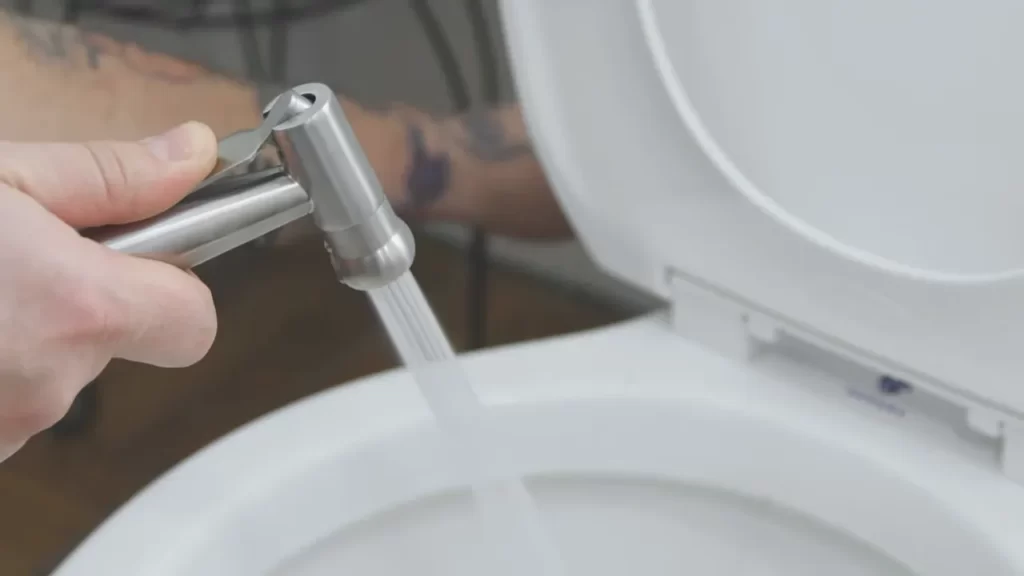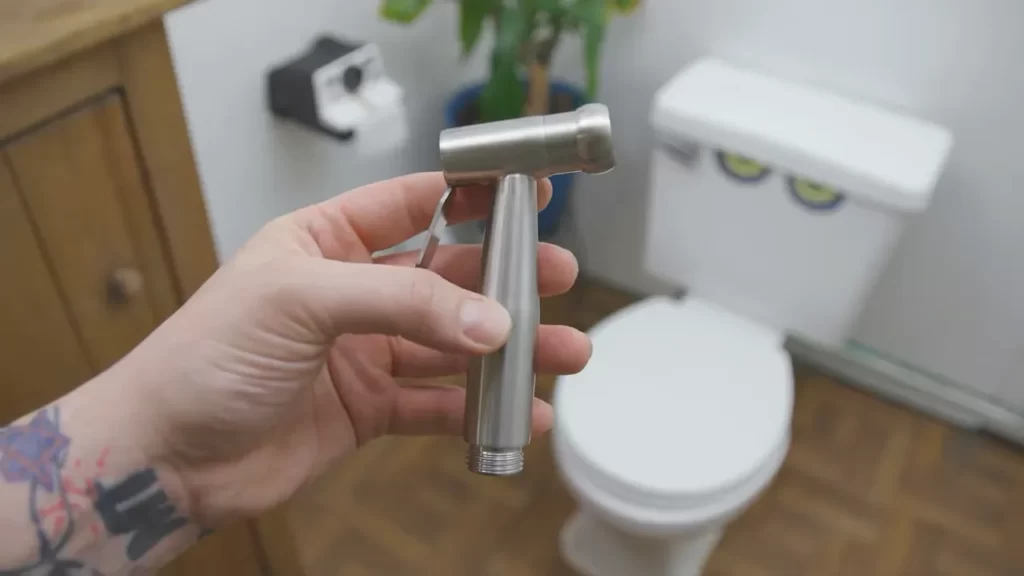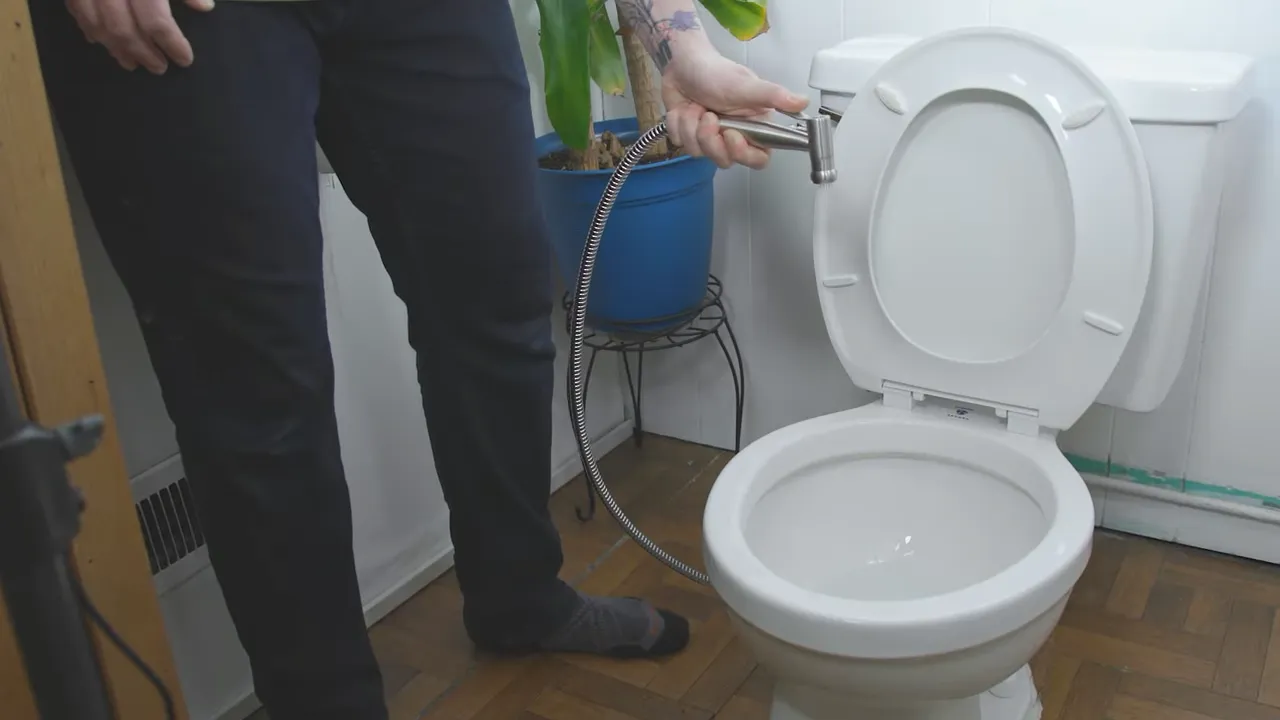To install a bidet in an apartment, start by consulting the building management to verify if bidet installation is allowed. Then, purchase a bidet attachment that fits your toilet and follow the manufacturer’s instructions for installation.
Choosing The Right Bidet For Your Apartment
When it comes to upgrading your bathroom experience, installing a bidet in your apartment can bring a whole new level of comfort and cleanliness. But with so many options to choose from, how do you know which bidet is the right fit for your apartment? In this guide, we will explore the benefits of using a bidet, the types of bidets available, and the factors you should consider when selecting one for your apartment.
Benefits of using a bidet
Before diving into the selection process, it’s important to understand the many benefits of using a bidet. Not only does it provide a thorough and hygienic cleaning experience, but it also offers several other advantages:
- Improved hygiene: Bidets use water to clean, eliminating the need for toilet paper and ensuring a more thorough cleanse.
- Reduced environmental impact: With a bidet, you’ll significantly reduce your consumption of toilet paper, contributing to a more sustainable lifestyle.
- Health benefits: Bidets can help prevent and alleviate various conditions such as hemorrhoids, urinary tract infections, and skin irritation.
- Comfort and convenience: Bidets often come with adjustable settings and features like heated seats, air dryers, and even remote controls for added comfort and convenience.
Types of bidets available
When selecting a bidet for your apartment, it’s important to be aware of the different types available. Here are the main types to consider:
- Non-electric bidets: These bidets are a cost-effective option and rely on water pressure to function. They are easy to install and operate, making them suitable for most apartments.
- Electric bidets: Electric bidets offer additional features such as adjustable water temperature, water pressure, and customizable cleansing options. They do require access to electricity, so make sure your apartment has an outlet nearby if considering this type.
- Portable bidets: If you’re renting or don’t want to make permanent changes to your apartment’s bathroom, a portable bidet is a great choice. These bidets can be easily attached to your existing toilet and can be taken with you when you move.
Factors to consider when selecting a bidet
Now that you know the benefits and types of bidets available, it’s time to consider some important factors before making a decision:
- Compatibility with your existing toilet: Ensure the bidet you choose is compatible with your current toilet setup. Measure the space available and check the compatibility specifications provided by the manufacturer.
- Installation requirements: Consider the installation process and whether you can do it yourself or if you need professional help. Non-electric bidets are generally easier to install compared to electric ones.
- Budget: Set a budget for your bidet purchase. Non-electric bidets are typically more affordable, while electric bidets with advanced features might come at a higher price point.
- User-friendliness: Look for a bidet that is intuitive to use and comes with clear instructions. Extra features like a remote control or an easy-to-use control panel can enhance the user experience.
With these considerations in mind, you’re well-equipped to choose the perfect bidet for your apartment. Remember to weigh the benefits, explore different types, and take into account the specific factors that matter most to you. Installing a bidet can revolutionize your bathroom routine and elevate your overall comfort and cleanliness.

Preparing For Bidet Installation
Installing a bidet in your apartment can be a game-changer in terms of hygiene and comfort. However, before you embark on this project, it’s important to take a few preliminary steps to ensure a smooth installation process. In this section, we’ll go over three key aspects of preparing for bidet installation: checking if your apartment allows bidet installation, gathering the necessary tools and materials, and understanding the water supply and drainage systems in your apartment.
Checking if your apartment allows bidet installation
Before diving into bidet installation, it’s essential to make sure your apartment allows it. While bidets are becoming increasingly popular, there are still some buildings and apartments that have specific rules or restrictions when it comes to plumbing modifications. Here’s what you need to do:
- Contact your apartment management or landlord to inquire about their policies regarding bidet installation. It’s important to get explicit permission to avoid any potential disputes or penalties later on.
- If your apartment management does not have a specific policy on bidet installation, you may need to consult your lease agreement or the building’s bylaws. Look for any clauses that mention plumbing modifications or ask your landlord or management for clarification.
- Once you have confirmed that bidet installation is allowed, it’s a good idea to get written permission or approval from your apartment management. This will serve as a reference in case any issues arise during or after the installation process.
Gathering the necessary tools and materials
Now that you’ve confirmed bidet installation is permitted in your apartment, it’s time to gather the tools and materials you’ll need. Here’s what you’ll typically need for a bidet installation:
| Tools | Materials |
|---|---|
| Adjustable wrench | Bidet kit (including bidet seat, hoses, and connectors) |
| Screwdriver (flathead and Phillips) | Teflon tape |
| Pliers | Drill and drill bits (if necessary) |
| Towel or rag | Bucket |
Understanding the water supply and drainage systems in your apartment
Before installing a bidet, it’s crucial to have a clear understanding of your apartment’s water supply and drainage systems. This will enable you to make any necessary adjustments or modifications during the installation process. Here’s a step-by-step guide to help you:
- Locate the water shut-off valve for your apartment. This valve controls the water flow to your entire unit and will allow you to turn off the water supply during the installation.
- Identify the existing water supply valve and pipes connected to your toilet. You’ll need to connect the bidet hoses to these pipes, so make sure they are accessible and in good condition.
- Check the location of the drainage pipe for your toilet. The bidet’s waste water will be connected to this pipe, so ensure it is accessible and has enough space for the bidet’s drainage connections.
- If needed, measure the distance between the water supply valve and the drainage pipe. This will help you determine if your bidet kit includes enough hose length or if you’ll need to purchase additional hoses or extensions.
By thoroughly preparing for bidet installation, you’ll be well-equipped to complete the process with ease and confidence. In the next section, we’ll delve into the step-by-step instructions for installing your bidet in an apartment.

Installing A Bidet In Your Apartment
Installing a bidet in your apartment can be a great way to enhance your bathroom experience and promote better hygiene. Whether you’re looking to save money on toilet paper or just want to enjoy the refreshing feeling of a bidet, the good news is that you don’t need to be a plumbing expert to install one. With a few basic tools and some simple steps, you can have a bidet up and running in no time. In this step-by-step guide, we’ll walk you through the process of installing a bidet in your apartment.
Step-by-step guide to installing a bidet
Shutting off the water supply
The first step to installing a bidet in your apartment is to shut off the water supply. To do this, locate the shut-off valve near the base of the toilet and turn it clockwise until it is fully closed. This will ensure that no water flows into the toilet during the installation process.
Removing the existing toilet seat
Next, you’ll need to remove the existing toilet seat. Start by locating the nuts or bolts that attach the seat to the toilet bowl. Use a wrench or pliers to loosen the nuts or bolts and remove them. Once the nuts or bolts are removed, lift the seat and cover straight up to detach it from the toilet.
Connecting the bidet to the water supply
Now that the old seat is removed, it’s time to connect the bidet to the water supply. Start by attaching the water supply hose to the valve at the bottom of the bidet. Thread the hose onto the valve and tighten it using an adjustable wrench. Then, connect the other end of the hose to the water supply valve on the toilet tank. Again, use an adjustable wrench to tighten the connection. Make sure all connections are secure to prevent leaks.
Installing the bidet attachment or seat
Once the water supply is connected, it’s time to install the bidet attachment or seat. Follow the manufacturer’s instructions to securely attach the bidet to the toilet bowl. This may involve aligning brackets or sliding the bidet onto a mounting plate. Make sure the bidet is properly seated and secure before moving on to the next step.
Testing the bidet for proper functioning
With the bidet securely installed, it’s time to test it for proper functioning. Turn on the water supply by gently opening the shut-off valve. Check for any leaks around the connections and if needed, tighten them further. Once you’re satisfied that all connections are secure, sit on the toilet and test the bidet by activating its functions. Adjust the water pressure and temperature to your liking. If everything works as expected, congratulations! Your bidet is now ready to use.

Ensuring Proper Maintenance And Care
Cleaning and sanitizing the bidet
Giving your bidet proper cleaning and sanitizing is crucial for maintaining its performance and longevity. Regular cleaning ensures hygiene and prevents the buildup of bacteria and germs. Here are some handy tips to keep your bidet sparkling clean:
1. Check the manufacturer’s instructions: Refer to the user manual provided by the bidet manufacturer for specific cleaning recommendations. It may include details about the type of cleaners to use or any cleaning tools to avoid.
2. Use mild cleaners: Opt for mild, non-abrasive cleaners to sanitize the bidet’s surfaces. Harsh chemicals can damage the bidet’s functionality and its appearance.
3. Clean the nozzles: Bidets often come with adjustable nozzles, so make sure to clean them thoroughly. Use a soft brush or toothbrush to remove any debris or mineral deposits that may have accumulated over time.
4. Wipe with a soft cloth: After cleaning, wipe down the bidet with a soft, lint-free cloth to remove any remaining residue or watermarks. This will keep the bidet looking polished and prevent any potential damage.
5. Regular maintenance: In addition to regular cleaning, consider adopting a regular maintenance schedule. This could involve cleaning the bidet once a week or as recommended by the manufacturer. Regular maintenance will not only keep the bidet clean but also help prevent any potential issues.
Regular maintenance tips for optimal performance
To ensure your bidet functions optimally, perform these essential maintenance tasks regularly:
– Check water pressure: Ensure that the water pressure is set at an appropriate level. Too high pressure can damage the bidet while too low may hinder its functionality. Check the user manual for specific instructions on adjusting the water pressure.
– Inspect for leaks: Regularly inspect the bidet for any leaks or drips. This can be done by examining the connection points and valves. Ensuring there are no leaks will help maintain the bidet’s performance and prevent any water damage issues.
– Clean the filters: Some bidets have built-in water filters to prevent debris from clogging the system. Check the manufacturer’s instructions to determine if your bidet has a filter and follow the recommended cleaning or replacement schedule.
– Test the spray patterns: Periodically test the different spray patterns and adjust them as needed. This ensures optimal comfort and satisfaction during use.
– Keep the area around the bidet clean: Regularly clean the surrounding area of the bidet to prevent the accumulation of dust, hair, or other particles that may affect its functionality.
Troubleshooting common issues with bidets
Even with proper care and maintenance, bidets can occasionally experience issues. Here are some common problems along with potential solutions:
Problem: Low water pressure
– Check if the water supply valve is fully open.
– Ensure the bidet’s water filter is not clogged and clean or replace it if necessary.
– If the issue persists, consult a professional plumber for further assistance.
Problem: Irregular or weak spray
– Check if the nozzles are clean and free from any obstructions.
– Adjust the water pressure to a suitable level.
– Contact the bidet manufacturer or customer support for additional troubleshooting steps.
Problem: Bidet not activating
– Ensure the bidet is properly connected to the water supply and power source (if applicable).
– Check if there is any damage to the control panel or buttons. If needed, contact the manufacturer for assistance or replacement parts.
By following these simple cleaning and maintenance tips, you can enjoy your bidet’s benefits for years to come. Remember to always refer to the manufacturer’s instructions for specific care guidelines and to troubleshoot any issues that may arise.
Frequently Asked Questions
How Do You Install A Bidet In An Apartment Toilet?
To install a bidet in an apartment toilet, follow these steps: 1. Choose a bidet attachment that fits your toilet seat. 2. Turn off the water supply to the toilet. 3. Remove the toilet seat and attach the bidet according to the manufacturer’s instructions.
4. Connect the bidet to the water supply and turn the water back on. 5. Reattach the toilet seat. Enjoy the benefits of a bidet in your apartment toilet!
What Plumbing Is Needed For A Bidet?
A bidet typically requires a separate water supply and a drain connection for plumbing. It needs both hot and cold water sources, and the drain connection should be near the bidet location.
Can You Install A Bidet Without Electricity?
Yes, a bidet can be installed without electricity.
Can You Install A Bidet Anywhere?
Yes, bidets can be installed in any bathroom.
Conclusion
Installing a bidet in your apartment doesn’t have to be a daunting task. By following the step-by-step instructions in this guide, you can easily add this hygienic and environmentally friendly fixture to your bathroom. With just a few tools and a little bit of time, you can experience the many benefits of using a bidet in your daily routine.
So go ahead and take the plunge – your posterior will thank you!
